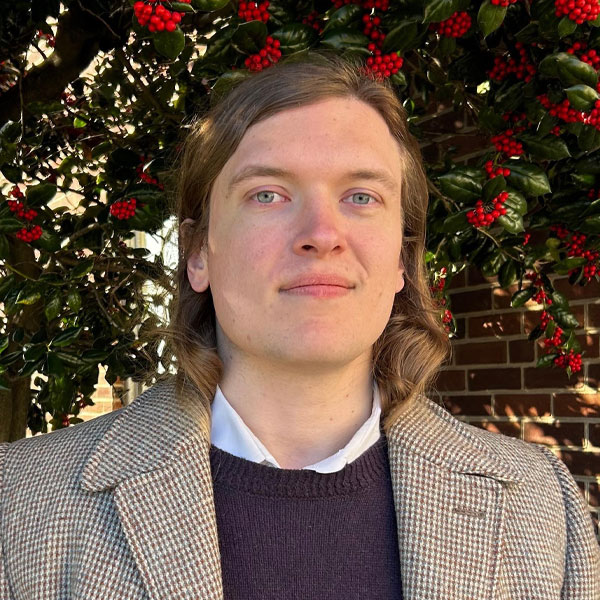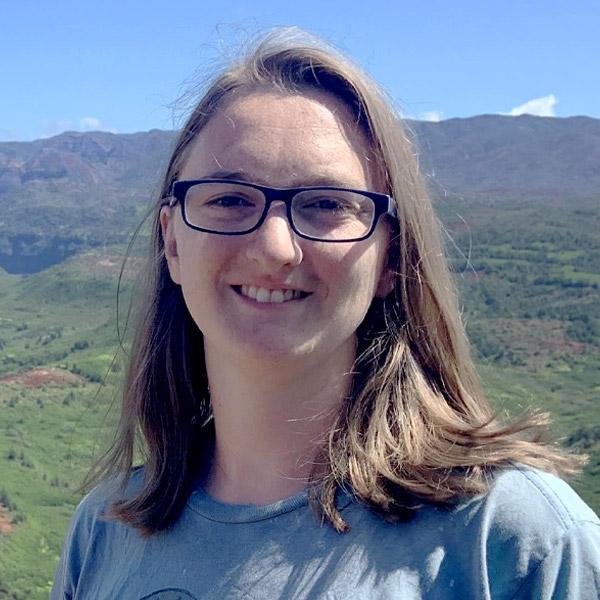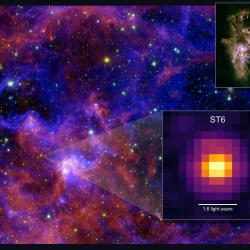Two From UMD Awarded 2024 NASA Astrophysics Postdoctoral Fellowships
The highly competitive NASA Hubble Fellowship Program named 24 new fellows to its 2024 roster, including two from the University of Maryland:
- Alexander Dittmann (Ph.D. ’24, astronomy)
- Amelia (Lia) Hankla, Neil Gehrels Prize Postdoctoral Fellow
“I am delighted to see two of our exceptional young scientists recognized for their work so far and future promise with such significant awards,” said Andrew Harris, chair of UMD’s Department of Astronomy.
The program fosters excellence and inclusive leadership in astrophysics by supporting a diverse group of exceptionally promising and innovative early-career astrophysicists. The fellowships enable outstanding postdoctoral scientists to pursue independent research in any area of NASA Astrophysics, using theory, observations, simulations, experimentation or instrument development. Each fellowship provides the awardee up to three years of support at a U.S. institution.
Over 520 applicants vied for the 2024 fellowships. Both Dittmann and Hankla were named Einstein Fellows, which seek to answer the broad question: How does the universe work?
“The NASA Hubble Fellowship Program is a highly competitive program, and this year's cadre of Fellows are to be congratulated on their selection,” said Mark Clampin, director of the Astrophysics Division at NASA Headquarters in Washington, D.C. “They will undoubtably be future leaders in the field of Astronomy and Astrophysics.”
Alexander Dittmann

Dittmann, who will be an Einstein Fellow at the Institute for Advanced Study in Princeton, received the award for his proposal titled “Bridging the Gap in Supermassive Black Hole Binary Accretion - From Simulation to Observation.”
Dittmann grew up in northern Virginia. He earned undergraduate degrees in physics and astronomy from the University of Illinois in 2018 before coming to UMD for his Ph.D. He has also worked at Los Alamos National Laboratory and the Center for Computational Astrophysics and will soon graduate with his doctorate under the guidance of Cole Miller.
Following his broad interests in high-energy astrophysics and fluid dynamics, Dittmann has studied a variety of astrophysical topics from the origins of planetary spins to the final moments of binary supermassive black holes. He has also used data from NASA’s NICER telescope to measure the radii of neutron stars, gleaning insight into the enigmatic nature of matter within their cores. As an Einstein Fellow, he will leverage cutting-edge simulations and his experience in astrostatistics to connect theoretical studies of binary black holes to the forthcoming bounty of time-domain observations of active galactic nuclei.
Amelia (Lia) Hankla

Hankla, who will be an Einstein Fellow at UMD, received the award for her proposal titled “Explaining Radio to X-ray Observations of Luminous Black Holes with a Multizone Outflowing Corona Model.”
Hankla grew up in Lafayette, Colorado. She earned her bachelor’s degree in physics and a minor in oboe performance from Princeton University in 2017 and then spent a year in Heidelberg, Germany, as a Fulbright Research Scholar at the Max Planck Institute for Astronomy. In 2018, Hankla returned home to Colorado for her doctorate in physics with the support of an NSF Graduate Research Fellowship. After completing her doctorate in the summer of 2023, Lia joined UMD’s Joint Space-Sciences Institute as the Gehrels Fellow and a Multimessenger Plasma Physics Center Fellow.
Hankla is interested in anything involving plasmas and black holes, especially accretion disks and their surrounding coronae. Although these plasmas just outside the event horizon hold the key to unraveling how black holes evolved over time, they remain poorly understood because of the difficulty connecting small-scale particle processes to the global scales of the entire accretion disk and corona. Interpreting observations of radio to X-ray emission from around luminous black holes requires understanding how and where magnetic energy dissipates into plasma particle energy.
As an Einstein Fellow, Hankla will decipher how these dissipation processes, including turbulence and magnetic reconnection, can further our understanding of nonthermal particle acceleration and winds in accretion disks and coronae. Her research aims to shed light on recent spectral timing and X-ray polarization observations of both stellar-mass and supermassive black holes, and to resolve long-standing questions regarding these mysterious objects in our universe.
This article was adapted from content provided by the Space Telescope Science Institute.







